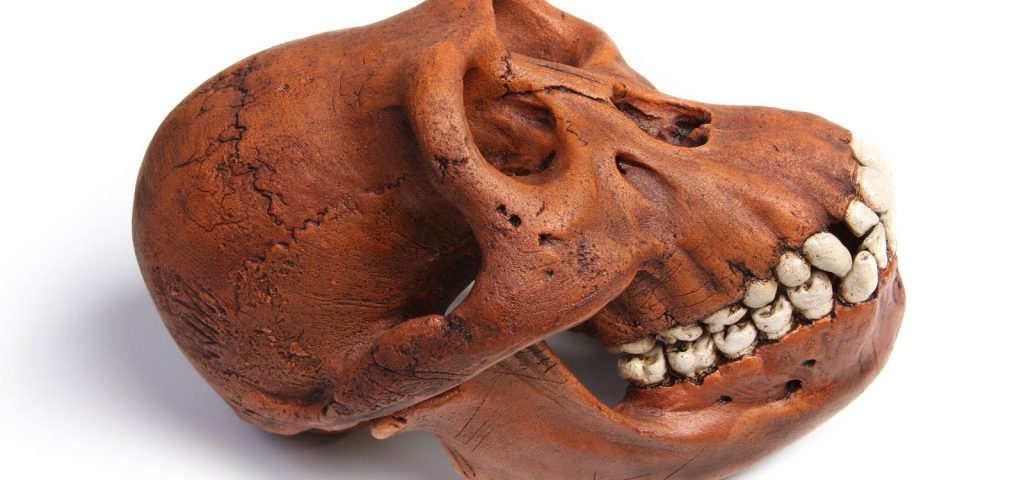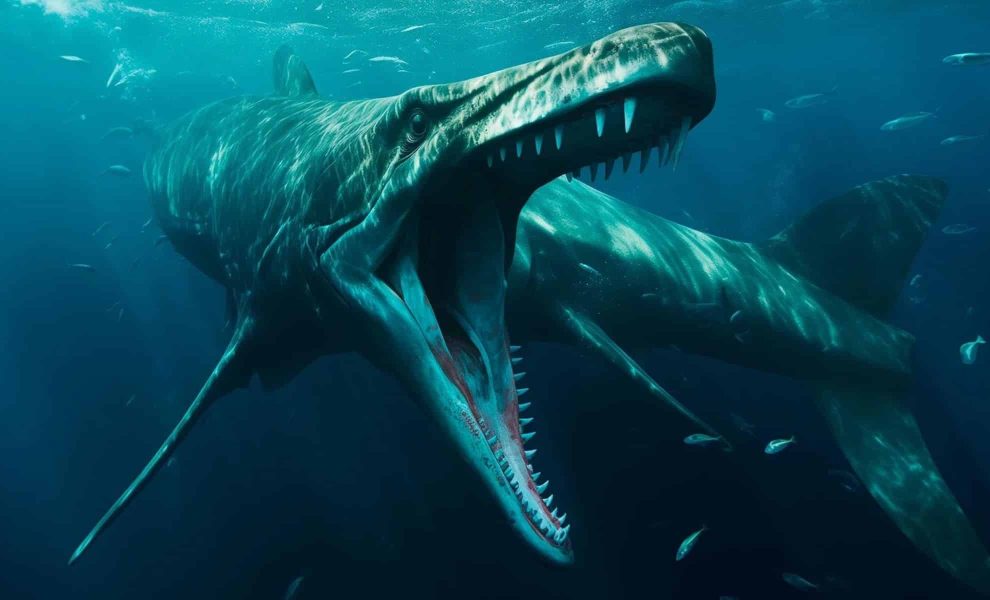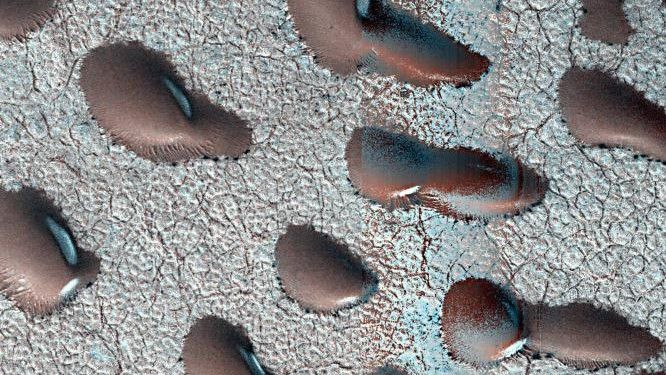Meet The Extinct Monkeys That ‘Rafted’ Across The Atlantic Over 30 Million Years Ago – Forbes

Once found in the jungles of Africa, researchers in South America have now discovered links tying … [+] these extinct primates to the continent—painting an incredible story of survival against the odds.Millions of years before the first human took to the seas, the first daring expedition across unforgiving waters had already been made. With no maps, no ships—and, to be fair, no choice—a group of monkeys made an improbable journey across the Atlantic Ocean.Fossil evidence unearthed in South America reveals the incredible story of these ancient primates, who clung to life on rafts of vegetation and survived a voyage that seemed impossible—not once, but at least three times.Approximately 30 to 40 million years ago, South America was an isolated landmass, separated from Africa by an expanse of ocean that spanned 900 to 1,300 miles (1,800 km), depending on fluctuating sea levels. The Atlantic Ocean was no less formidable than it is today, and yet, ancient primates from Africa found their way across its vast waters to the distant shores of South America.Their incredible journey was neither intentional nor voluntary. Storms, floods or other natural disasters likely swept these early primates onto large rafts of uprooted trees and vegetation. Carried by ocean currents and favorable winds, these floating ecosystems transported the primates across the Atlantic in a voyage that might have taken weeks or even months.Natural rafts like the ones that ferried the monkeys have played a key role in the story of life’s spread across the planet. These accidental vessels, teeming with vegetation and debris, have carried more than just their cargo—they’ve transported species to entirely new worlds.In 1995, hurricanes in the Caribbean unleashed masses of vegetation into the sea, creating natural rafts that delivered green iguanas to previously uninhabited islands.Even more dramatically, the 2011 tsunami in Japan sent waves of debris rafting across the Pacific. Entire ecosystems hitched a ride, with marine species traveling thousands of miles to the shores of North America. Here’s a video about this:Evidence for this improbable journey comes from fossilized teeth discovered in South America. These fossils, representing at least three distinct migrations, belong to species that include Perupithecus ucayaliensis, Ucayalipithecus perdita and most recently, Ashaninkacebus simpsoni.The first fossils of Perupithecus ucayaliensis—dated to approximately 36 million years ago—were uncovered in Peru in 2015. The teeth bore remarkable similarities to those of North African primates, suggesting a direct evolutionary link.Later, in 2020, fossils of Ucayalipithecus perdita were found in the same region, pointing to yet another migration around 32 million years ago. Most recently, in 2023, the discovery of Ashaninkacebus simpsoni in Brazil further expanded our understanding of these ancient voyages, revealing a group of primates that were small, fruit-eating and highly adaptable.The fossil record of New World monkeys has long hinted at African origins, but recent discoveries provide the clearest evidence yet. The molars of Perupithecus, Ucayalipithecus and Ashaninkacebus bear striking similarities to those of African primates, confirming a shared evolutionary lineage.These teeth reveal distinct cusp patterns that are virtually identical to those of parapithecids and eosimiids, families of African primates that lived over 30 million years ago.What makes these findings even more compelling is their geographic context. Fossil sites in South America, like the Río Yurúa region in Peru, have yielded teeth remarkably well-preserved for their age. These discoveries have bridged the gap between Africa’s primate ancestors and the diverse array of New World monkeys thriving today, including capuchins, howler monkeys and tamarins.However, despite their African ties, the monkeys that rafted across the Atlantic likely represent distinct evolutionary experiments. The discovery of Ucayalipithecus perdita, for example, suggests that these primates were part of the parapithecid family, a group previously known only from Africa. Their teeth were nearly identical to those of Qatrania, an African primate from the Eocene epoch, underscoring the evolutionary ties between these ancient populations.The natural world is full of examples of animals undertaking extraordinary journeys across oceans, driven by geological forces and chance events. Madagascar’s rich biodiversity, for instance, owes much to similar rafting events.Ancestors of lemurs, tenrecs and other land vertebrates are believed to have made their way to the island from mainland Africa millions of years ago on rafts of vegetation, according to a May 2023 study published in Biological Reviews.Similarly, penguins—typically associated with Antarctica and its frigid surroundings—have been found in Australia, Africa and parts of South America. Fossil evidence suggests that ancient penguins migrated to these warmer regions millions of years ago, possibly aided by shifting ocean currents and favorable climatic conditions.Even insects like painted lady butterflies demonstrate astonishing feats of migration. These delicate creatures have been observed traveling thousands of miles, moving from Europe to Africa in a multi-generational journey.The transatlantic journeys of African primates coincided with a time of significant environmental changes. During the late Eocene and early Oligocene epochs, sea levels dropped as glaciers formed in Antarctica, narrowing the oceanic gap between continents. This period also saw stronger ocean currents and storm systems, which may have facilitated the creation of large, floating rafts capable of carrying animals across great distances.While the odds of survival during such a journey were slim, those that made it found a land ripe with opportunity. Free from many predators and competitors, South America offered a fertile ground for adaptation and evolution. Over time, these early pioneers helped shape the ecosystems we see today.The story of the monkeys that rafted across the Atlantic is a testament to the resilience of life in the natural world. Do stories like these inspire you to learn more about the world around you? Take a 2-minute test to see where you stand on the Connectedness to Nature Scale.One Community. Many Voices. Create a free account to share your thoughts. Our community is about connecting people through open and thoughtful conversations. We want our readers to share their views and exchange ideas and facts in a safe space.In order to do so, please follow the posting rules in our site’s Terms of Service. We’ve summarized some of those key rules below. Simply put, keep it civil.Your post will be rejected if we notice that it seems to contain:User accounts will be blocked if we notice or believe that users are engaged in:So, how can you be a power user?Thanks for reading our community guidelines. Please read the full list of posting rules found in our site’s Terms of Service.





